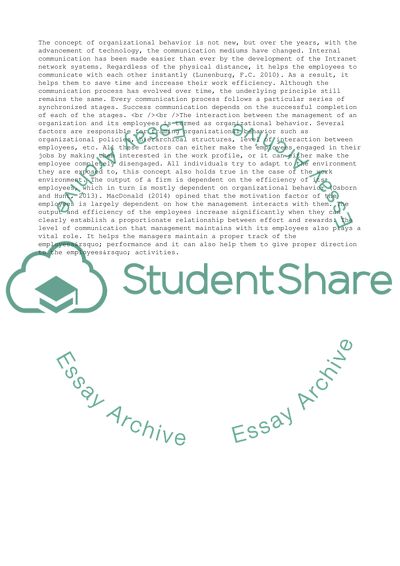Cite this document
(Impact of Organizational Behaviour and Organizational Communication Models Coursework Example | Topics and Well Written Essays - 1750 words, n.d.)
Impact of Organizational Behaviour and Organizational Communication Models Coursework Example | Topics and Well Written Essays - 1750 words. https://studentshare.org/management/1851883-explore-how-managers-can-use-specific-communication-models-to-create-more-effective-working-teams
Impact of Organizational Behaviour and Organizational Communication Models Coursework Example | Topics and Well Written Essays - 1750 words. https://studentshare.org/management/1851883-explore-how-managers-can-use-specific-communication-models-to-create-more-effective-working-teams
(Impact of Organizational Behaviour and Organizational Communication Models Coursework Example | Topics and Well Written Essays - 1750 Words)
Impact of Organizational Behaviour and Organizational Communication Models Coursework Example | Topics and Well Written Essays - 1750 Words. https://studentshare.org/management/1851883-explore-how-managers-can-use-specific-communication-models-to-create-more-effective-working-teams.
Impact of Organizational Behaviour and Organizational Communication Models Coursework Example | Topics and Well Written Essays - 1750 Words. https://studentshare.org/management/1851883-explore-how-managers-can-use-specific-communication-models-to-create-more-effective-working-teams.
“Impact of Organizational Behaviour and Organizational Communication Models Coursework Example | Topics and Well Written Essays - 1750 Words”. https://studentshare.org/management/1851883-explore-how-managers-can-use-specific-communication-models-to-create-more-effective-working-teams.


